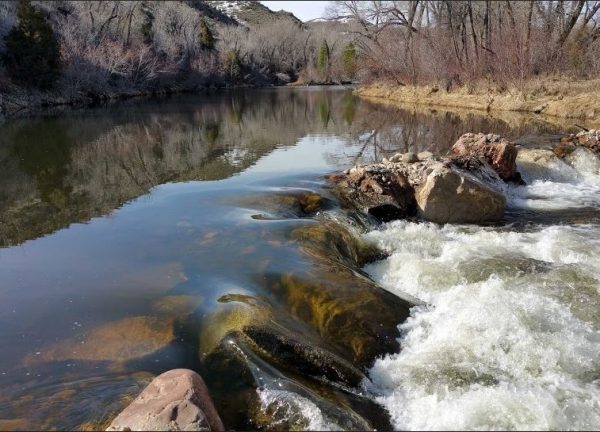In the northernmost extension of the Southern Rocky Mountains, the Encampment River flows north out of Colorado, past the town of Encampment and into the North Platte River. Along part of the river’s canyon lies Wyoming’s smallest Wilderness, approximately 16 square miles, a strip less than one mile wide in the southern portion that widens to about five miles near the northern boundary. This is known as the Encampment River Wilderness Area.
The United States Congress designated the Encampment River Wilderness in 1984 and it now has a total of 10,124 acres. All of this wilderness is located in Wyoming and is managed by the Forest Service.
Encampment River Wilderness
Throughout the canyon, the river runs from wild rapids to peacefully placid stretches, and is home to brook, rainbow, and brown trout (the fishing can be worth the hike). Sagebrush grows on the open slopes, and the canyon is full of riparian vegetation.
The Encampment River Trail runs the length of this narrow, rugged river canyon, one of the main attractions of the Wilderness. The lower five miles are relatively easy to hike, although the terrain becomes increasingly difficult in the remaining 10 upper miles.
The trail receives moderate use by hikers. Along the way you’ll pass ruins of old cabins and mining operations. You may see members of a large wildlife population: mule deer, elk, Rocky Mountain bighorn sheep. The river runs wildly over rocks, creating rapids that only expert kayakers dare to attempt.
Restrictions in the Encampment River Wilderness Area
ALL VISITORS
Camping is prohibited within one hundred (100) feet of trails, lakes, or streams.
Human waste must be deposited at least one hundred (100) feet from lakes, streams, trails or campsites. Use a shovel or trowel and bury waste at least 6 inches below ground.
Maximum group size allowed is twenty-five (25) “heartbeats,” with a maximum combined fifteen (15) persons and ten (10) horse/mules/lamas, etc. The maximum number of people allowed in any group is fifteen (15).
Dogs and other pets or animals must be under control at all times to prevent harassment or disturbance to wildlife, people, personal property and livestock.
As with all designated wilderness areas, it is illegal to use or possess any mechanical vehicle, wagon, cart, bicycle, etc. within the wilderness boundary.
STOCK USERS
Only certified weed-free hay or supplemental feed (such as alfalfa pellets or treated grain) may be possessed, transported or used for feed or bedding within the wilderness boundary. Note: Certified hay is required for all Medicine Bow-Routt National Forest Lands.
OVERNIGHT VISITORS
Camping is limited to 21 consecutive days. After 21 days visitors must move themselves and all camping equipment, supplies and personal belongings off National Forest lands for a period of three (3) days.
It is illegal to store or leave unattended any equipment, personal property, or supplies for more than 24 hours. It is illegal to construct permanent camping structures. All temporary camp structures (e.g. tent frames, meat poles, etc.) must be completely dismantled after use and before leaving a campsite.

